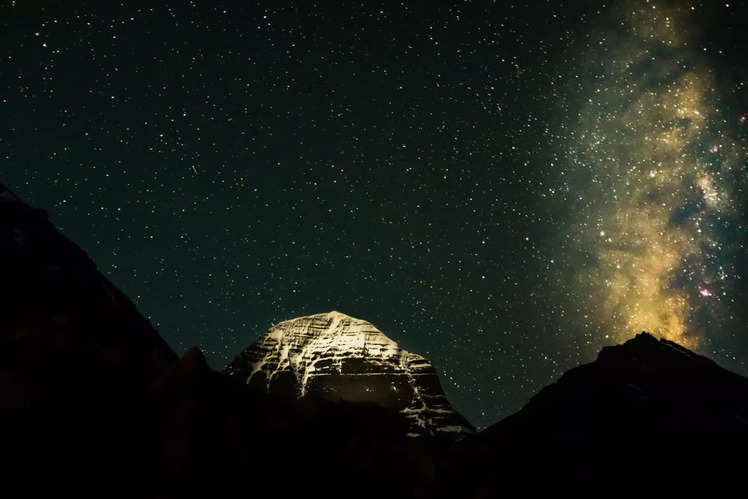Mount Kailash: Sacred Abode of Divinity and Adventure
Introduction: Hidden amidst the towering peaks of the Himalayas lies a place that is not just a mountain but a symbol of devotion, pilgrimage, and awe-inspiring natural beauty. Mount Kailash, standing tall in the remote corner of Tibet, is a destination like no other. In this blog, we embark on a spiritual and adventurous journey to explore the mystical allure of Mount Kailash, a place revered by Hindus, Jains, and seekers of the extraordinary.

The Magnificent Mount Kailash: At an elevation of 6,638 meters (21,778 feet), Mount Kailash stands as one of the world's holiest peaks. Its pristine snow-capped beauty and distinct pyramid shape have beckoned pilgrims and trekkers for centuries.
A Divine Connection - Hinduism: For Hindus, Mount Kailash holds profound significance as the abode of Lord Shiva. It is believed to be the earthly manifestation of Mount Meru, the cosmic center of the universe. Hindus undertake the sacred Kailash Parikrama, a circumambulation of the mountain, as a pilgrimage to cleanse the soul and seek Lord Shiva's blessings.
A Spiritual Sojourn - Jainism: In Jainism, Mount Kailash is revered as Mount Ashtapada, associated with Rishabhadeva, the first Tirthankara. Jains visit this sacred site as part of their spiritual journey, believing it to be a place of enlightenment and liberation.
The Kailash Yatra - Pilgrimage Extraordinaire: The Kailash Yatra is a pilgrimage that draws devotees from around the world. The journey is arduous, involving both physical and spiritual challenges. Pilgrims trek through rugged terrain, icy passes, and high-altitude deserts to reach the holy mountain.
 .
.
The Transcendental Experience: The Kailash Yatra is not merely a physical journey; it's a journey within. The pristine landscapes and the aura of divinity that envelop Mount Kailash inspire moments of deep introspection and spiritual awakening.
Lake Manasarovar - The Sacred Companion: Adjacent to Mount Kailash lies Lake Manasarovar, believed to be a creation of Lord Brahma. It is a vital part of the pilgrimage, and its crystal-clear waters are considered to cleanse one's sins. The Kailash Parikrama often includes a dip in the holy waters of Lake Manasarovar.
The Mythical Chakra and Lotus: Mount Kailash is said to have a unique formation resembling a chakra (wheel) and a lotus, adding to its mystique. These natural wonders are believed to be symbolic representations of the cosmic order and purity.
The Challenge of Kora: The Kailash Parikrama, also known as the Kora, is a challenging trek that covers approximately 52 kilometers (32 miles) around the mountain. It is not for the faint-hearted, but the rewards are immeasurable for those who complete it.
Preserving Nature and Spirituality: Despite its spiritual significance, Mount Kailash and its surroundings remain pristine. The Chinese government, in collaboration with local authorities, has taken measures to preserve the ecological balance and religious sanctity of this revered site.
Conclusion: Mount Kailash is not just a mountain; it's a divine experience, a testament to human endurance, and a symbol of unwavering faith. Whether you are a seeker of spiritual enlightenment, an adventurer, or simply a lover of nature's grandeur, Mount Kailash offers an unforgettable journey that transcends earthly boundaries. It beckons you to witness the confluence of spirituality and natural wonder in one of the most sacred places on our planet. As you embark on this extraordinary adventure, may you find solace, inspiration, and a profound connection with the divine at the sacred Mount Kailash.

Comments
Post a Comment